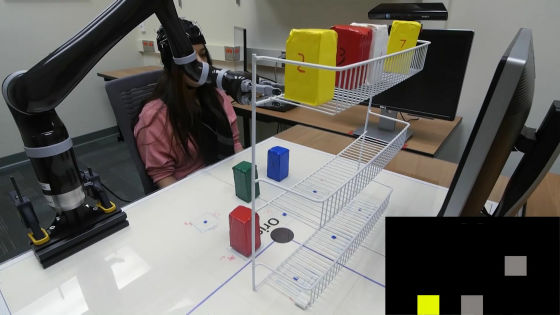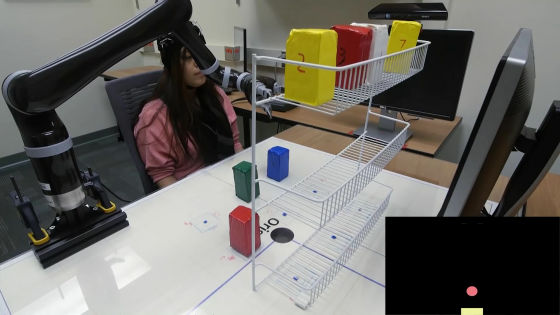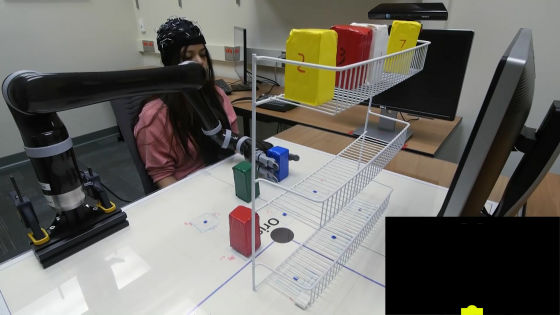Succeeded to three-dimensionally move the robot arm as desired by wearing a hat with an electrode

Research on "Brain Machine Interface (BMI)" which manipulates machines as thought in mind is proceeding. Researchers in the United States have succeeded in steering the robot arm just as you wish, just wearing a hat with an electrode without applying special surgery to the head.
Noninvasive Electroencephalogram Based Control of a Robotic Arm for Reach and Grasp Tasks: Scientific Reports
http://www.nature.com/articles/srep38565
Robot Arm Can Be Controlled With Thoughts | Digital Trends
http://www.digitaltrends.com/cool-tech/robot-arm-brain-interface/
For those who have disabilities in the limbs due to spinal cord injury or stroke, BMI, which can be operated with just a thought, is an epoch-making device and is expected to be put into practical use. Conventional research has developed BMI, a method of detecting brain waves by implant surgery that embeds electrode parts in the brain and transmitting signals to the machine, but accompanied by invasion to the body with a burden of surgical operation costs It was undeniable that the hurdle was high to use from.
Researchers at the University of Minnesota are developing a noninvasive BMI for the body, and only by exercising with a hat with an electrode built in, examinees can now accurately control the robot arm in three dimensions I'm announcing the state in the movie.
Noninvasive EEG-based control of a robotic arm for reach and grasp tasks - YouTube
The task imposed on the subjects is "to place things on the shelf." Imaged at the bottom right of the image is a visualized image of the subject, giving instructions to the robot arm by moving the center pink cursor to the cream color block in the head.

First, when moving the pink cursor to the square block in front of the left hand, the robot arm moved to the left in the horizontal direction while maintaining the height. When the block changed from cream color to yellow, the robot arm was able to complete the desired motion.

Next, operation in the vertical direction. Move the cursor downwards ......

We are ready to grab the blue object by moving the robot arm downwards.

The robot arm grasping the object for a while ......

Target to the right of the shelf as instructed.

Since the left and right adjustments are completed, the last move to the back.

Succeeded to accurately store the grasped object in the shelf.

When 8 subjects finished training for 2 months, they seemed to succeed in storing objects on the shelf with a 70% to 80% chance.

The University of Minnesota's BMI uses 64 electrodes to detect brain waves and tell the machine. Three-dimensional movement in three dimensions is realized through one-dimensional + two-dimensional cursor manipulation. Professor Bin He, who led the research, said he plans to continue improving tests to deliver patients who need noninvasive BMI machines.
Related Posts:







